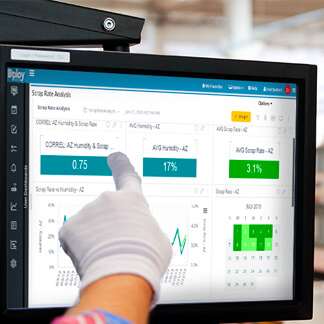Integrating manufacturing technology into the business and determining where it makes the most economic sense, will take several years.
Consumers continue to be very prudent about where and how they spend their money, and they keep pushing for greater customization. That’s driving manufacturing leaders to hone their customer connectivity, think about what their customers really want, and become more innovative.
Manufacturing Technology is Here to Stay.
The world where we made hundreds of thousands of one item continues to fade away. With the constant introduction of new models and new features, companies have to be careful and look hard at what they keep making and actively manage SKU proliferation. As it becomes more complex, the whole supply chain, not just the factory, has to be transformed. Even with more industrial and B2B products, where the pace of change and product life cycles are slower, users want new features and options.
Take telemetry, for example. Equipment tracking and monitoring capabilities benefit both equipment users’ efforts to increase productivity and utilization, as well as manufacturers’ mandate to improve reliability and performance. The Internet of Things will revolutionize asset performance management. Some industries are already reaping the benefits of new technology.
Look at additive manufacturing or 3D printing. It’s one of the most disruptive technologies to come along in a long time. People are figuring out the material science, the geometries and configurations, and how to make it work. Integrating such capabilities into the business, and determining where it makes the most economic sense, will take longer. But someday, if your business supplies spare parts through distributors or dealers, you will 3D print and ship certain products and parts to customers on demand.
We talked about this recently with an industrial client that has hundreds of dealers who stock thousands of small, metallic and non-metallic replacement parts. They ship spares from the factory to the dealers. All of that inventory and inventory management could go away. Some parts may never be manufactured at scale. They will be 3D printed on demand.
Manufacturers will have to figure out how to design for and support that type of production. How will you manage Intellectual Property (IP) throughout the process? How will you manage supplier and customer channels? Will spare parts still go through distributors or will they be shipped direct from the factory? There are all sorts of business questions that company leaders will have to answer.
Part of the challenge for manufacturers is generational. Most of the engineers working today don’t know how to design parts and products that fully leverage 3D printing capabilities. But you have young people using rudimentary 3D printers at home. Those kids will grow up, graduate from high school and go to college. These future engineers will know how to really leverage such technology. But they’re five to ten years away from being in the workforce.
Regardless of how quickly such manufacturing technology applications unfold, I haven’t visited any client site in the past several years where a relentless focus on shortening lead times and cycle times was not something they should be doing. While the fundamental principles of lean and Six Sigma are the same as they were 30 years ago, new information technology tools—like those solutions developed by our new solutions partners, Activ Technologies and Supply Chain Sciences–will help manufacturers implement and practice the methodologies in a more collaborative way.





